[SOLVED] Can’t Change Taskbar Color in Windows
You may fail to change the taskbar color if the graphics settings of your system are corrupt. Moreover, a corrupt user profile or Windows installation may also cause the error under discussion.
The user encounters the issue usually after a Windows update, when he tries to change the color of his taskbar (either the relevant options are greyed out/missing or changes do not take effect) or the taskbar automatically changes to odd colors (without user intervention). For some of the users who were able to change the color, the taskbar reverted to the odd colors after a short time.

Before moving on with the solutions to fix the taskbar color, restart your system to rule out any temporary glitch. Moreover, make sure you are using an activated version of Windows as you can personalize Windows if you are using an inactivated version. Furthermore, check if your system is not in tablet mode.
Solution 1: Revert to the Default Windows Theme
The taskbar color issue could be a temporary glitch of the display module. The glitch can be cleared by reverting to the default Windows theme.
- Right-click on the desktop of your system and in the menu shown, select Personalize.
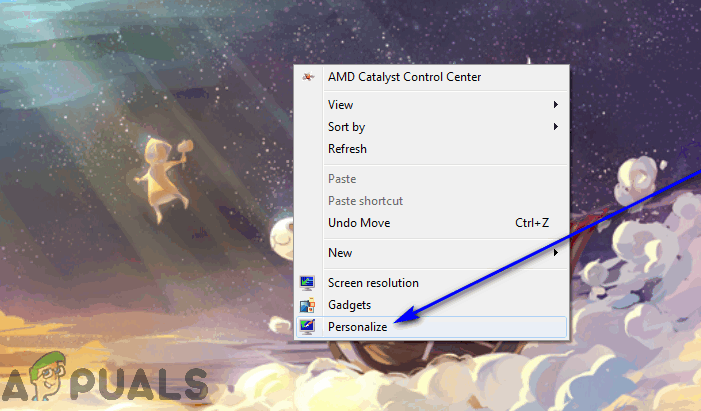
Right-click on your Desktop and click on Personalize - Now, in the left half of the Settings window, select Themes and then click on Windows (in the Change theme section).
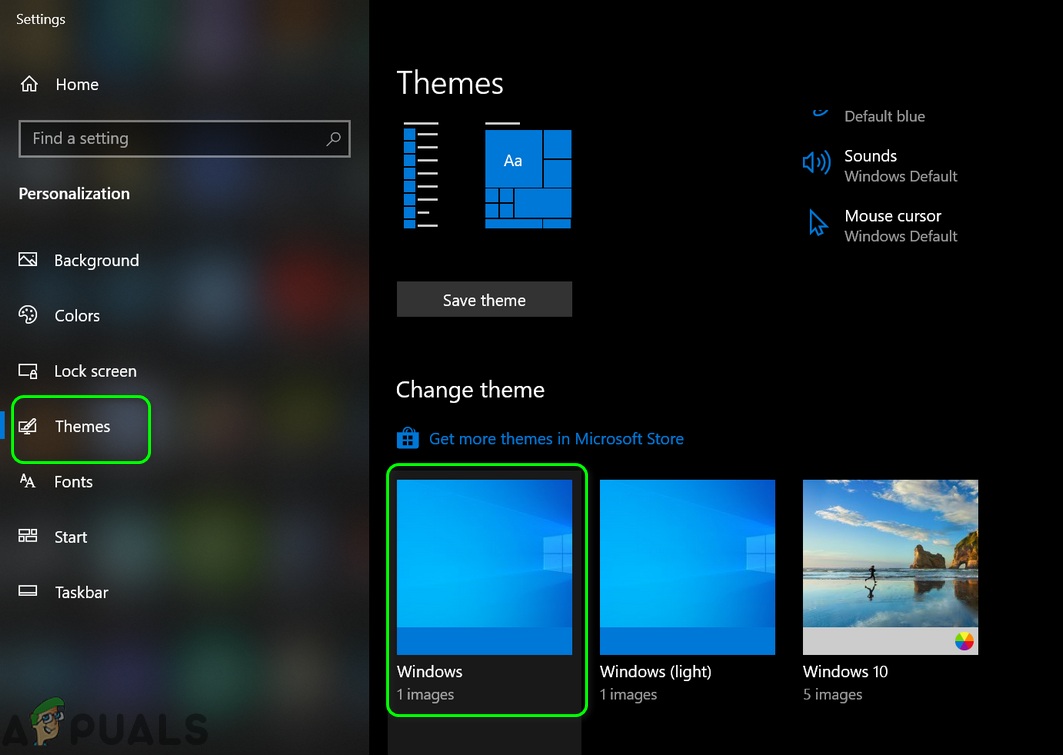
Revert to Windows Theme - Then check if you can change the Taskbar color.
Solution 2: Update Windows of Your System to the Latest Build
Microsoft is continuously working to make Windows better by adding new features to it and patching its known bugs. You may encounter the error at hand if you have not updated the Windows to the latest build. In this context, updating Windows of your system to the latest build may solve the problem.
- Press Windows + Q keys simultaneously and type Check for Updates (in the Windows Search bar).
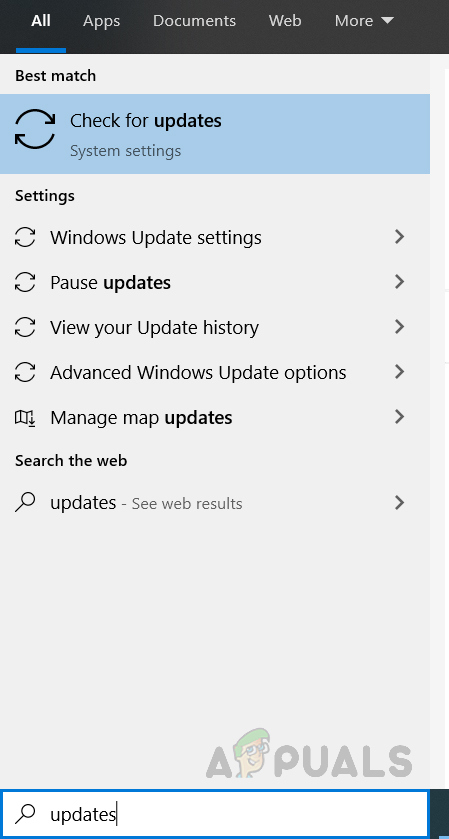
Check for updates - Now, in the Updates window, click on the button of Check for Updates. If updates are offered, then download and install those updates.
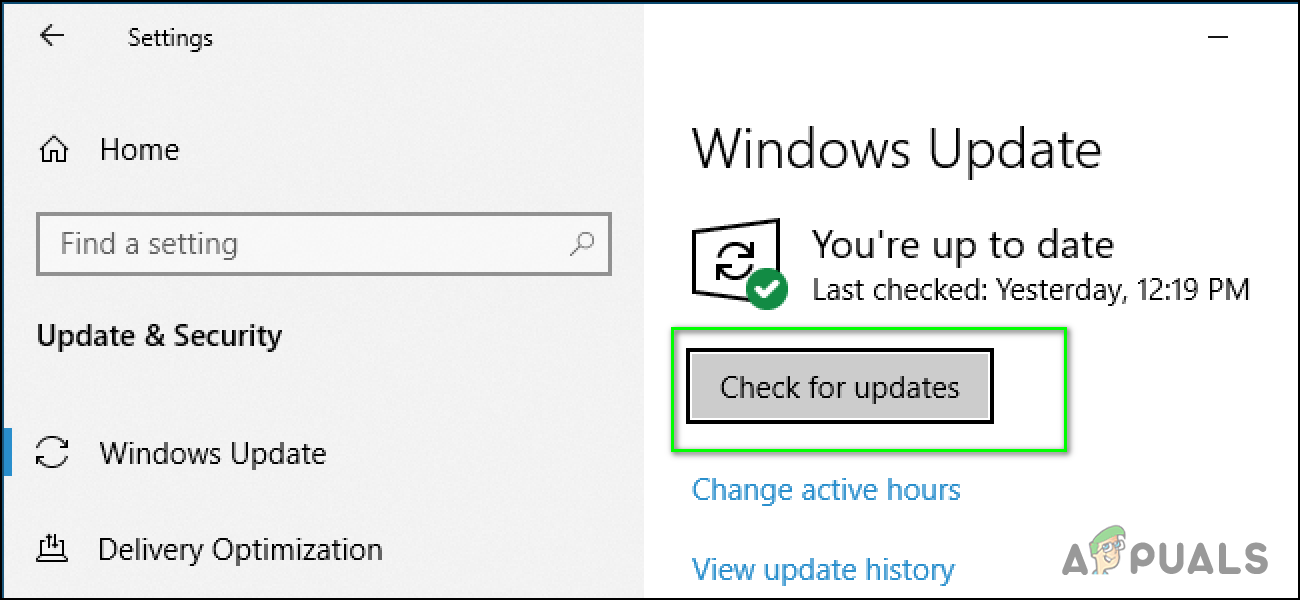
Check for Windows Updates - Then restart your system and upon restart, check if the taskbar color issue is resolved.
Solution 3: Change the Color of the Taskbar After Enabling/Disabling Different System Options
Starting from Windows 10 version 1903, Microsoft has altered the process of changing the color of your taskbar. Follow the under mentioned steps to check if you can change the color of the taskbar.
- Click on the Windows button and search for the term Settings. Now, in the results shown by Windows Search, select Settings.

Opening Windows Settings - Then open Personalization and change Background as a Solid color.
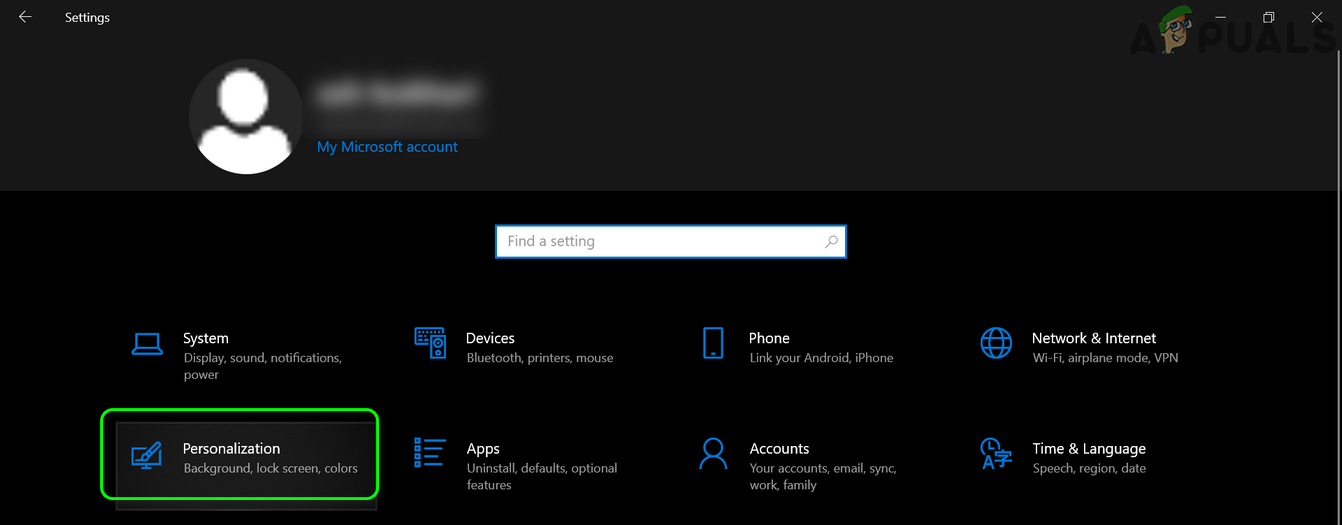
Open Personalization in the Windows Settings - Now in the left pane of the window, click on Colors, and then, in the right pane of the window, open the dropdown of Choose Your Color.
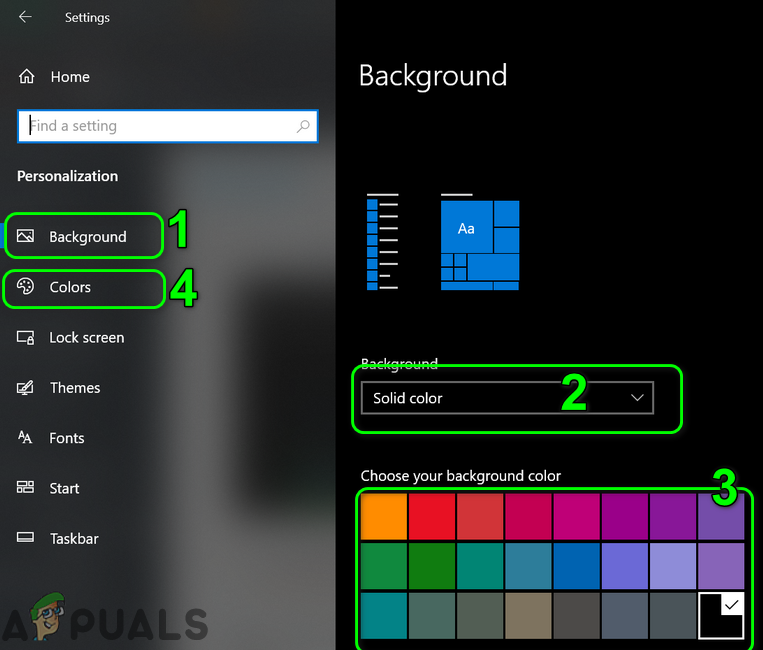
Change Background Color to Solid - Then select Custom and check the option of Dark in the section of Choose Your Default Windows Mode.
- Now check the option of Light in the section of Choose Your Default App Mode.
- Disable the Transparency Effects by toggling its switch to the off position.
- Now uncheck the option of Automatically Pick an Accent Color from My Background (under Choose Your Accent Color).
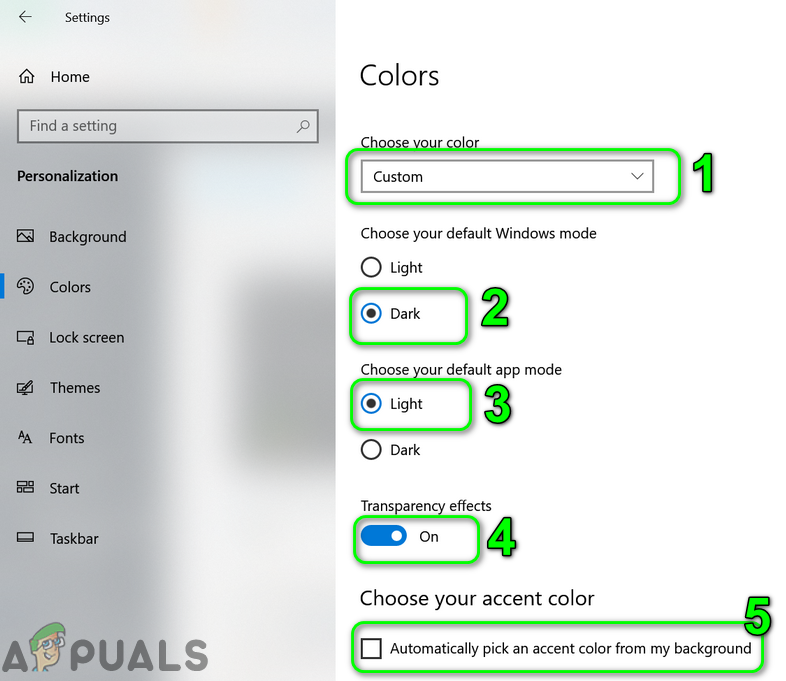
Set Color Mode to Custom and Disable Transparency - Then select a color of your choice in the Windows Colors section.
- Now, under the head of Show Accent Color on the Following Surfaces, check both the options near the end of the screen titled “Start, Taskbar and Action Center” and “Title Bars and Windows Bar”.
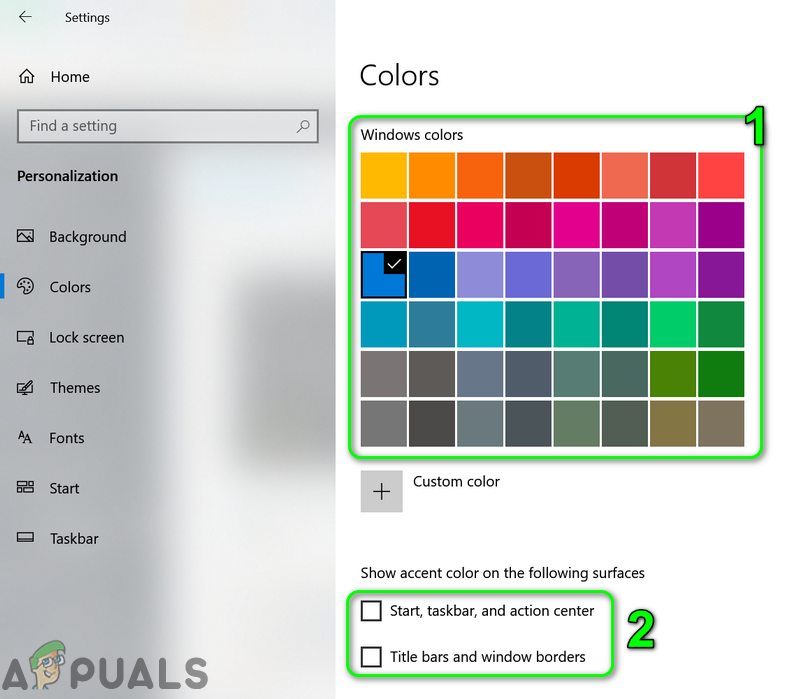
Select a Color and Enable the Option of Show Accent Color on the Following Surfaces - Then check if the color of the taskbar is changed.
- If not, open Settings (step 1) and select Ease of Access.
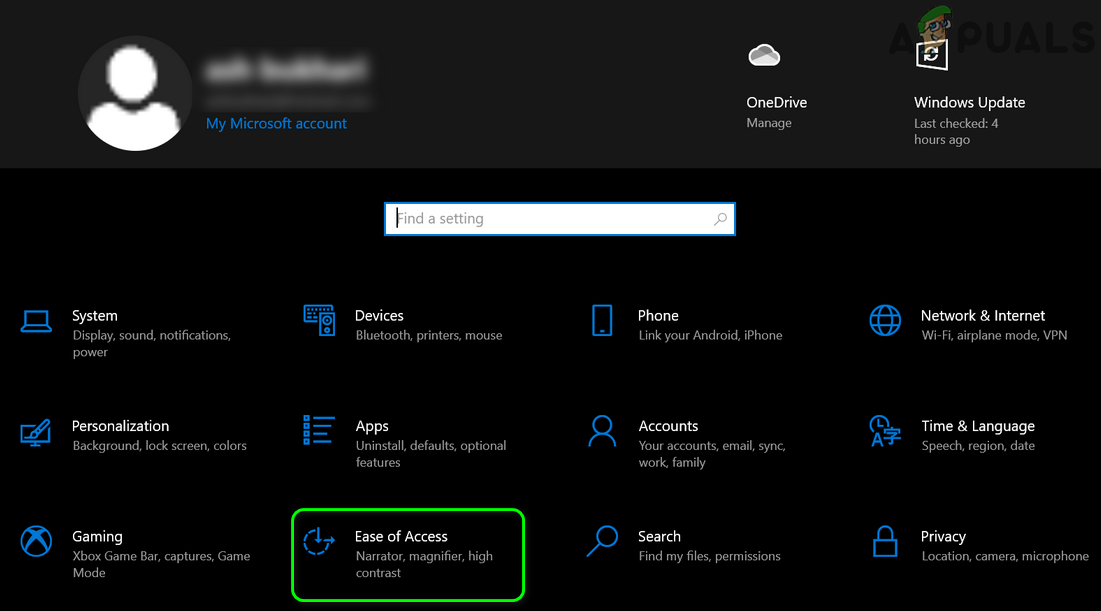
Open Ease of Access in Settings - Now, in the left pane of the window, select Color Filters and then disable it by turning the switch of Turn on Color Filters to disable position and check if the taskbar color is changed.
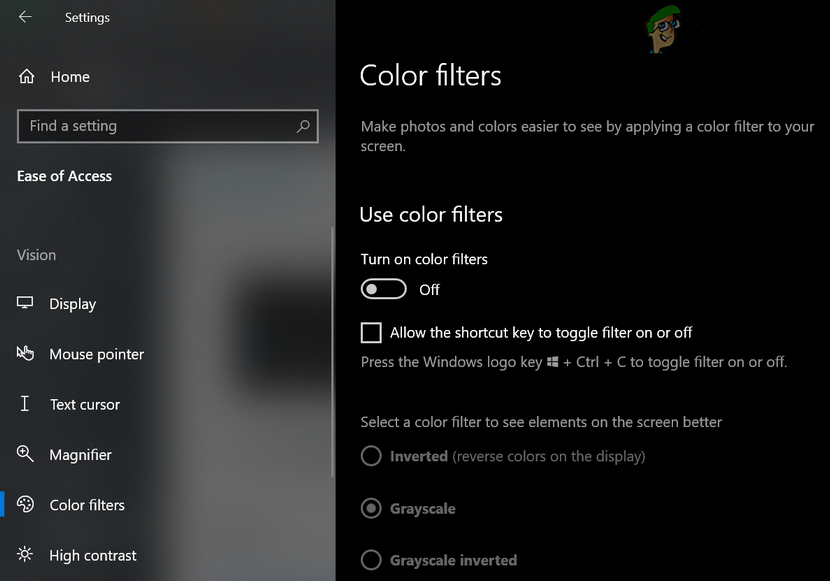
Disable Color Filter
Solution 4: Reset the Graphics Settings of Your System to Defaults
You may fail to change the color of the taskbar of your system if its graphics settings are misconfigured. In this case, resetting the graphics to their defaults may solve the problem.
AMD
- Right-click on the desktop of your system and open AMD Radeon Settings.

Open AMD Radeon Setting - Now, navigate to the Preferences tab and select Restore Factory Defaults.
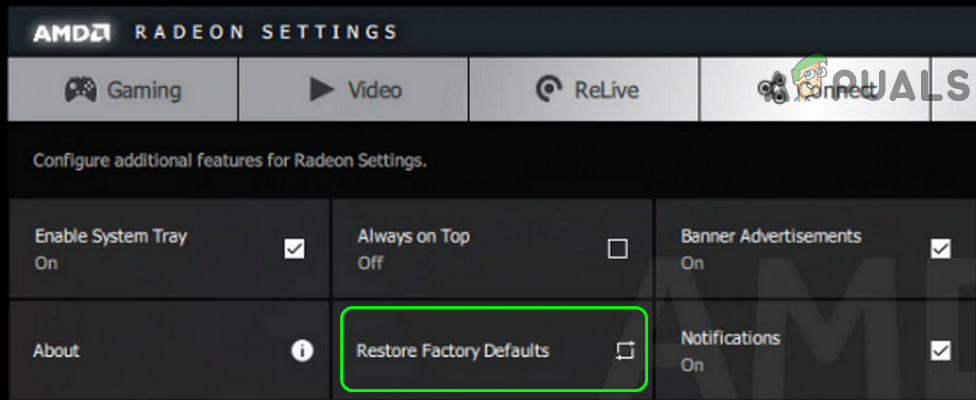
Restore Factory Defaults of AMD Radeon
NVIDIA
- Right-click on the desktop of your system and open the Nvidia Control Panel.
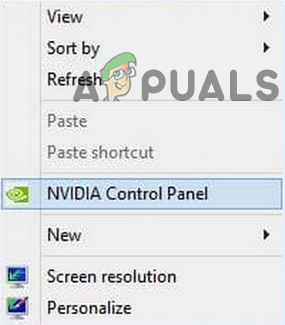
Open Nvidia Control Panel - Now click on Manage 3D Settings and then click on Restore Defaults (near the top right of the window).
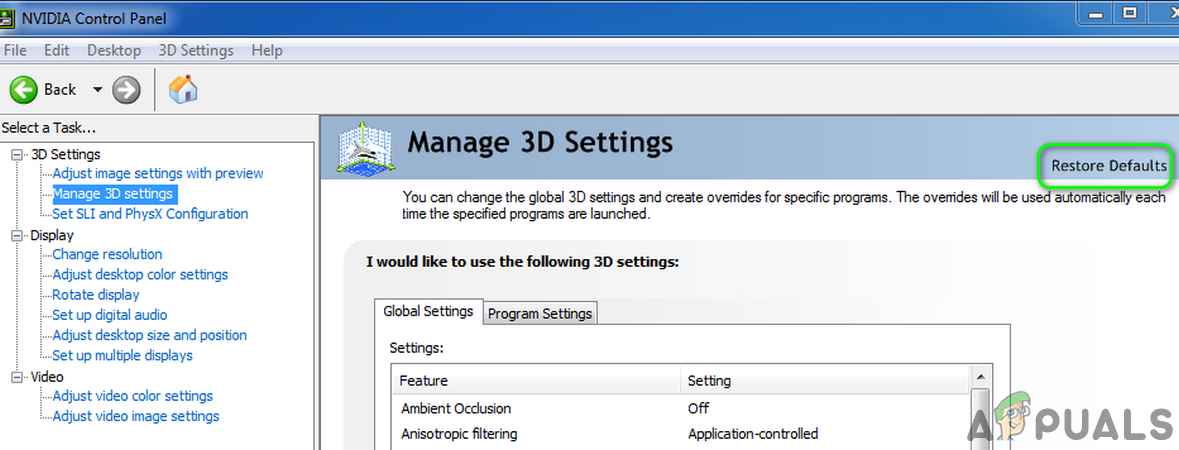
Restore Defaults of Nvidia Control Panel
Intel
- Right-click on the desktop of your system and in the menu shown, select Graphics Properties.

Open Graphics Properties - Now, open 3D and then click on Restore Defaults (near the bottom of the window).
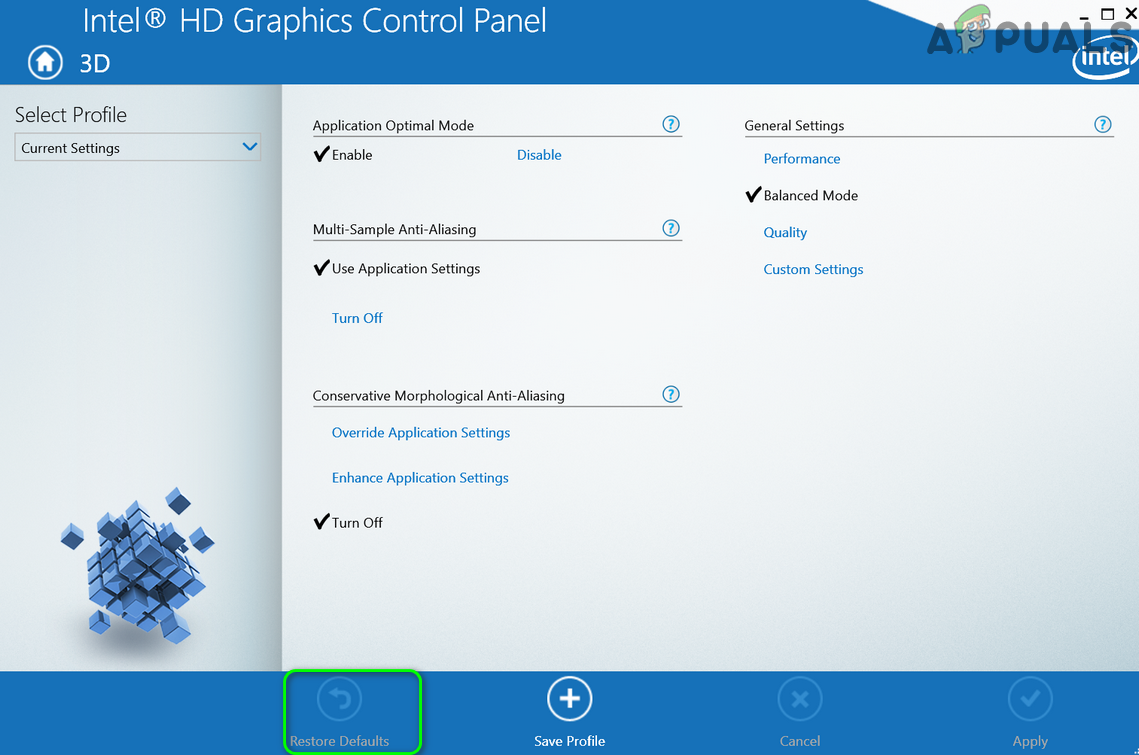
Restore Defaults of Intel Graphics Settings
After resetting the graphics settings, restart your system and then check if you can change the color of the taskbar.
Solution 5: Remove Conflicting Applications
Many Windows users tend to use different applications to control the appearance and feel of their systems. Some of these applications may restrict users from changing the color of the taskbar through the Windows Settings. In this case, uninstalling these conflicting applications may solve the problem. One such application known to create the issue is Stardock Start10.
- Press the Windows key and right-click on Stardock Start10 and then, in the sub-menu shown, click on Uninstall.
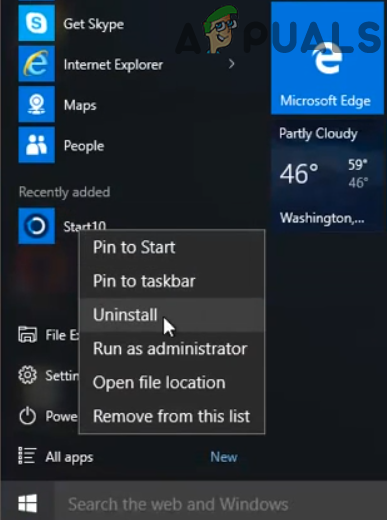
Click on Uninstall in the Sub-Menu of Start10 - Now, in the list of installed applications of the Control Panel, select Stardock Start10 and click on Uninstall. If Stardock Start10 is not shown in the installed applications’ list, right-click in the Control Panel window and select Refresh.

Uninstall Stardock Start10 - Then follow the prompts on your screen to uninstall Start10 and then restart your system.
- Upon restart, check if there are any other such applications, if so, then uninstall the conflicting applications and restart your system.
- Upon restart, check if the taskbar’s color can be changed.
If you do not want to uninstall Stardock Start10 (or similar applications), then try to dig out the features (e.g. disabled color change) restricting you from changing the color of the taskbar.
Solution 6: Use the High Contrast Mode
If you still cannot change the color of the taskbar of your system, then using the high contrast mode to get the desired effect may solve the problem.
- Click on the Windows button and then click on the gear icon to open Windows Settings.
- Now open Ease of Access and then, in the left half of the window, select High Contrast.
- Now toggle the switch of Turn on High Contrast to on and then check if you can change the color of the taskbar.

Enabling High Contrast in Windows
Solution 7: Delete the Personalization Registry Key
If trying the solutions mentioned above did not solve the taskbar color issue, then deleting the relevant registry key may solve the problem.
Warning:
Proceed at your own risk as editing registry requires a certain level of expertise and if not done properly, you may cause everlasting damage to your system and data.
- Simultaneously press Windows + Q keys and type Registry Editor. Then, in the list of results shown by Windows Search, right-click Registry Editor and select Run as Administrator.
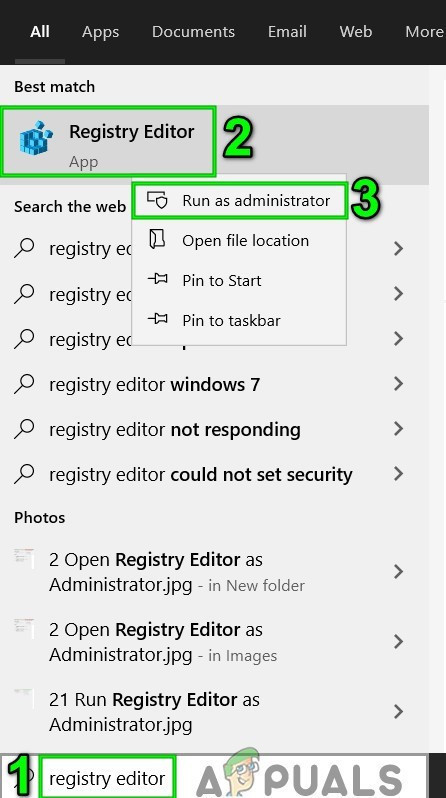
Open Registry Editor as Administrator - Then back up the registry of your system (just in case…).
- Now, navigate to the following:
Computer\HKEY_LOCAL_MACHINE\SOFTWARE\Policies\Microsoft\Windows\Personalization
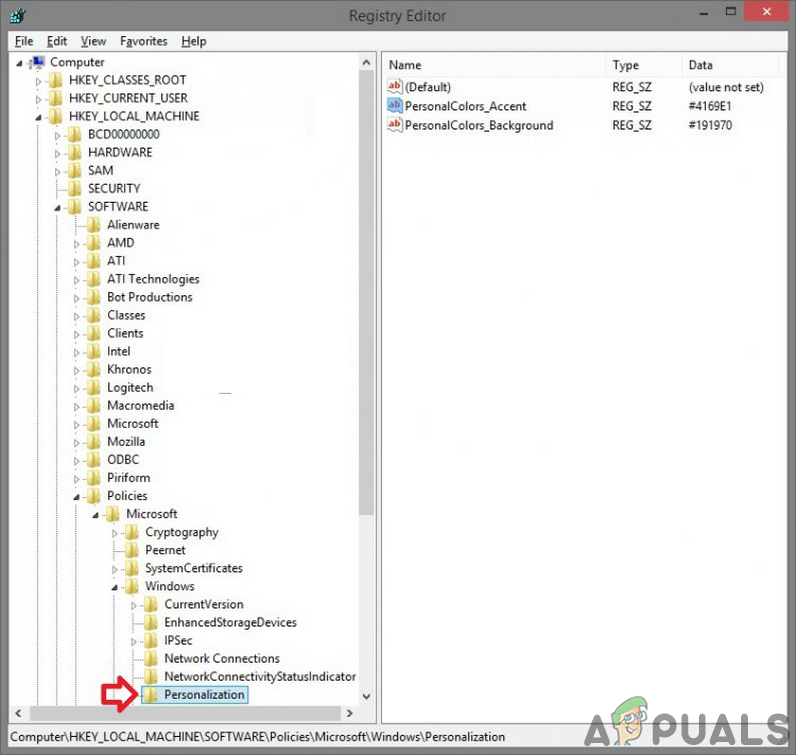
Delete Personalization Registry Key - Now, in the left pane of the window, right-click on Personalization and then click on Delete.
- Then confirm to delete and exit the Registry Editor.
- Now restart your system and upon restart, check if you can change the color of the taskbar.
Solution 8: Use Another User Account
You may fail to change the color of the taskbar if your user profile is corrupt. In this case, using another account (either a built-in administrator account or creating another user account) may solve the problem.
- Right-click on the Windows button and in the menu shown, select Computer Management.
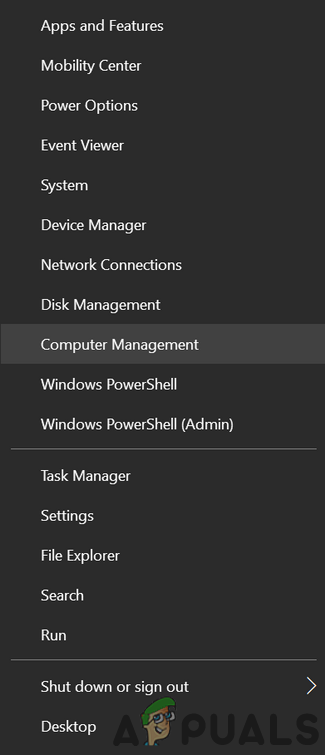
Open Computer Management - Then, in the left pane of the window, expand Local Users and Groups.
- Now, click on Users, and then, in the right pane of the window, right-click on Administrator and select Properties.
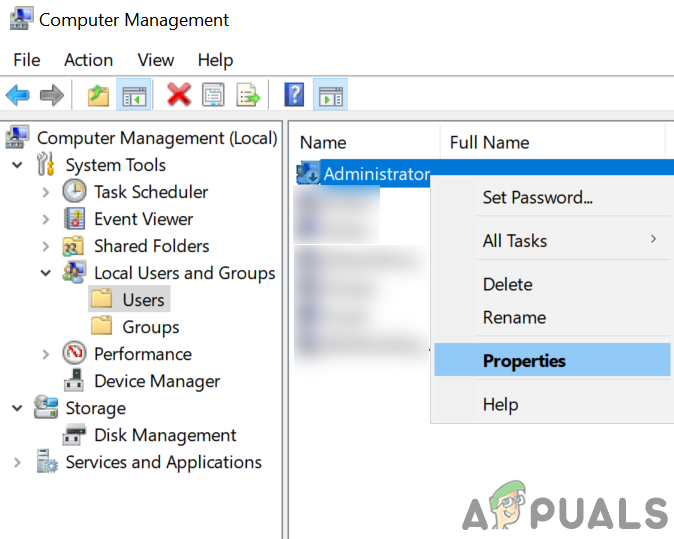
Open Properties of Built-in Administrator Account - Then uncheck the option of “Account is Disabled” and click on Apply/OK buttons.

Enable Built-in Administrator Account - Now, restart your system, and upon restart, log in using the built-in administrator account and then check if you can change the color of the taskbar.
Solution 9: Reset Windows of Your System to the Defaults
If none of the solutions was able in sorting out the issue for you, then the issue could be a result of the corrupt installation of your system’s Windows. In this case, reset the Windows of your system to the defaults and hopefully, the taskbar color issue is resolved.
If the issue is still there, then either you have to perform a clean installation of Windows or use a 3rd party application (like TranslucentTB, Taskbowfree, Winaero’s Personalization Panel for Windows 10, Classic Shell, or Winaero Tweaker) to change the color of the taskbar.




